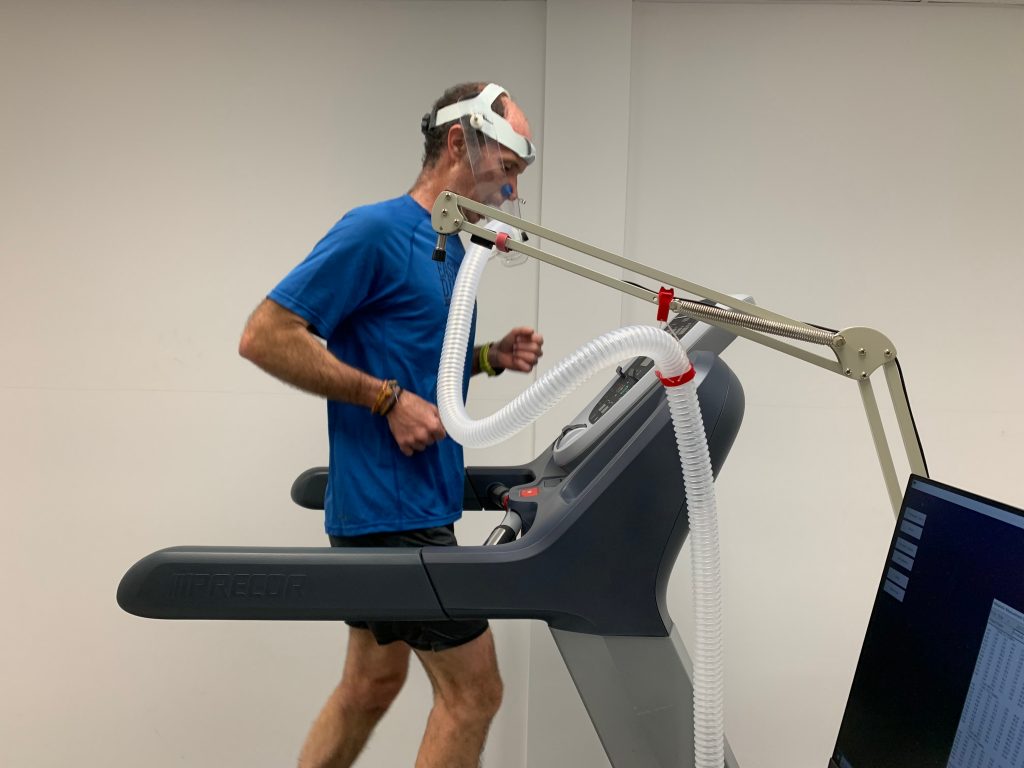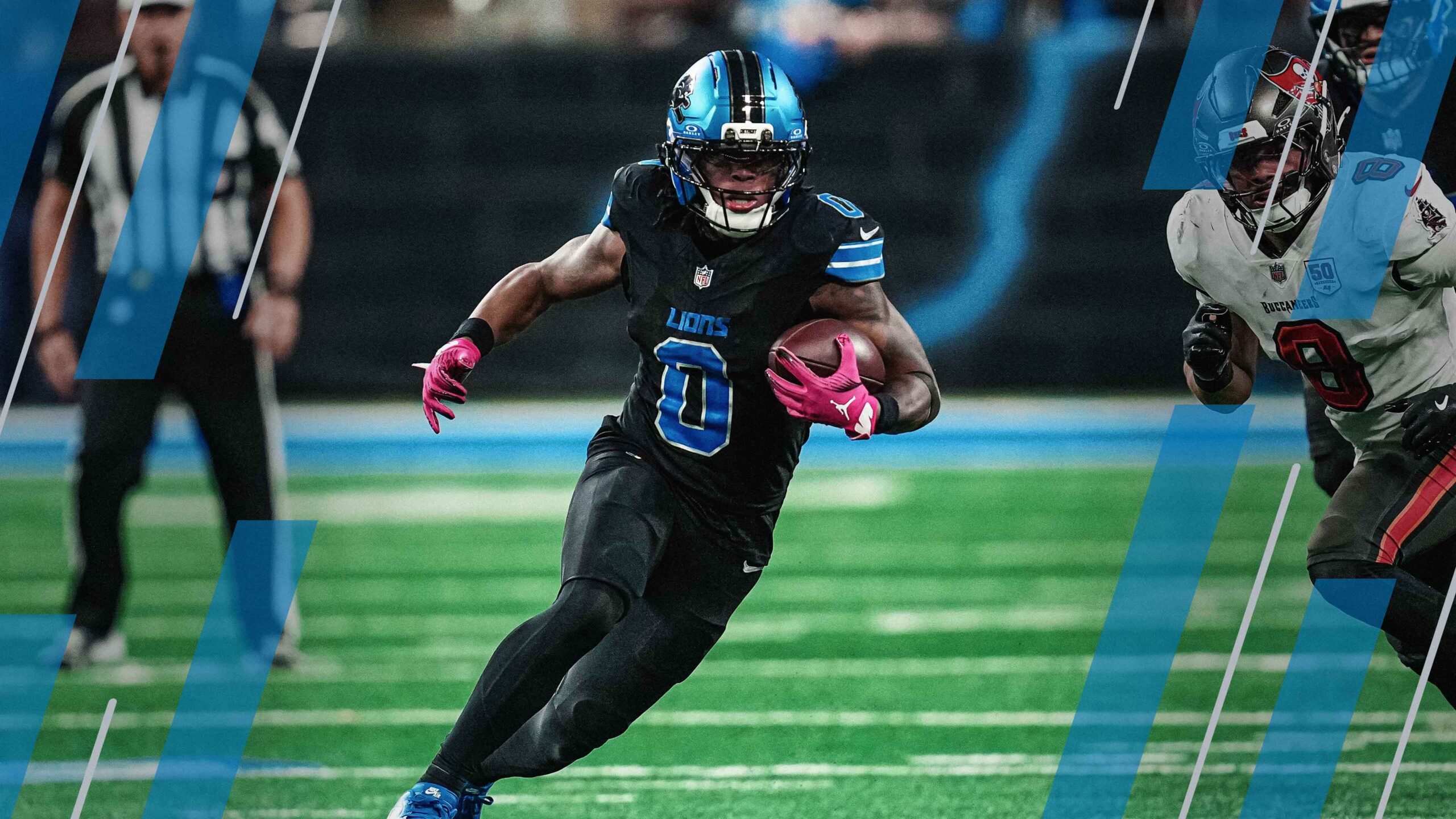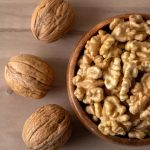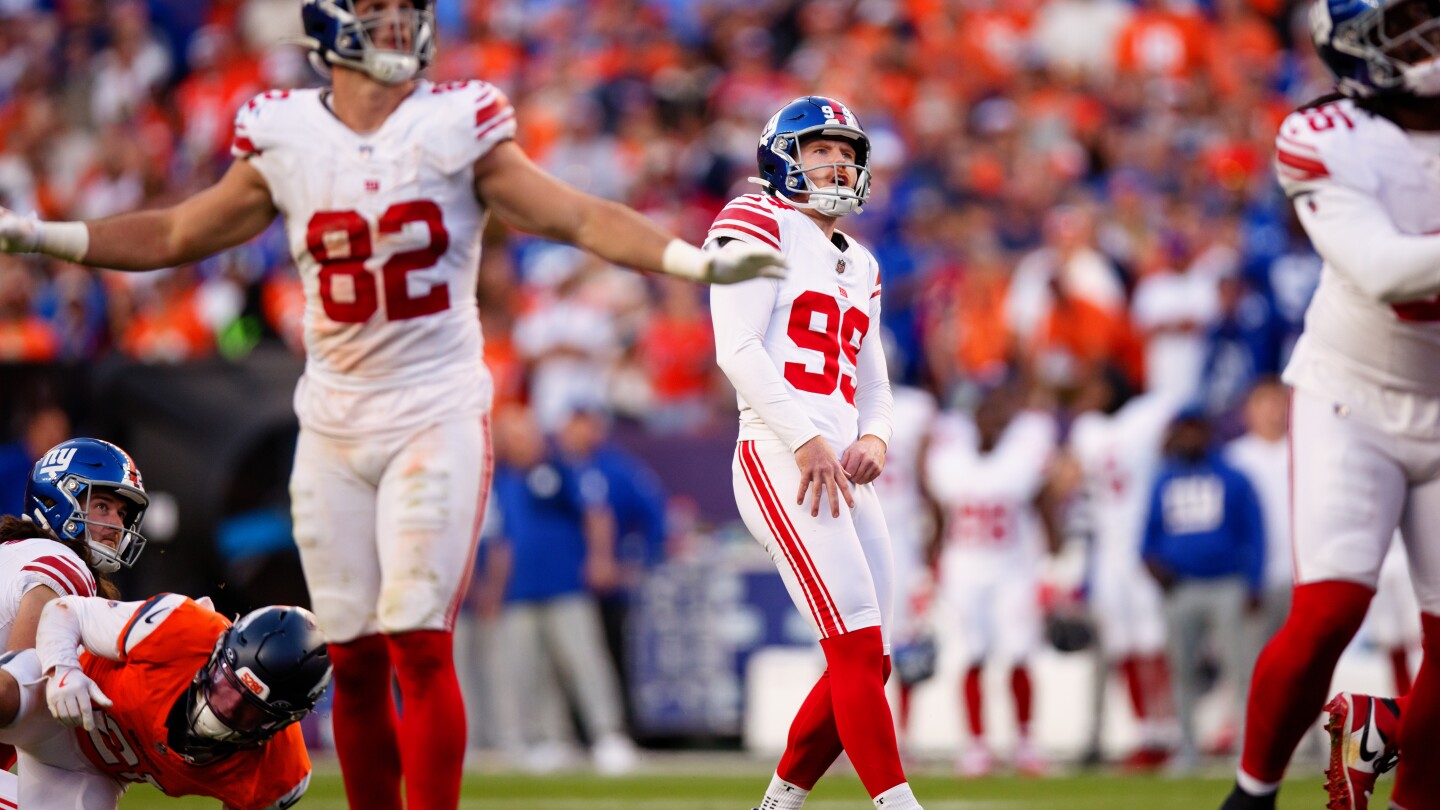- Jahmyr Gibbs surpasses 200 yards for the first time: The Detroit Lions lead running back found success on the ground and as a receiver, leading to more than 200 offensive yards for the first time in his NFL career.
PFF’s fantasy football recap focuses on player usage and stats, breaking down all the vital information you need to achieve fantasy success in 2025.
Tampa Bay Buccaneers @ Detroit Lions
Monitor Mike Evans’ health: The Buccaneers wide receiver suffered a concussion and a shoulder injury in the second quarter, and the team quickly ruled him out.
Injuries have been a problem for the Buccaneers’ wide receivers all season. Chris Godwin didn’t make his debut until Week 4, suffered a fibula injury in Week 5 and has missed the past two games. He didn’t practice all week. Jalen McMillan suffered a neck injury in the preseason and has yet to make his 2025 regular-season debut.
However, there was some good news leading up to the game. Evans was back up the lineup after missing three straight games with a hamstring injury. Emeka Egbuka seemed unlikely to play this week with a hamstring injury, and while he didn’t practice Thursday and Friday, he was surprisingly limited in practice Saturday. It was announced hourts before kickoff that Egbuka would play.
Evans played 14 of a possible 19 snaps before his new injuries, returning to his usual role as the Buccaneers’ X receiver. Egbuka was on more of a snap count, playing 11 of the first 19 snaps and a little more frequently on later downs. Egbuka started the season as the Buccaneers’ Z receiver but moved to X following Evans’ injury. He was back to Z to start this game. Sterling Shepard was the third wide receiver in three-receiver sets, as he’s done all season, with Tez Johnson rotating with Egbuka and Kameron Johnson taking a few snaps for Evans. Ryan Miller oddly received the start but was on the bottom of the depth chart.
After Evans’ injury, Egbuka moved back to the X receiver spot. Tez Johnson became the second primary receiver, playing more frequently. That matched how the Buccaneers handled Week 6 before Egbuka’s injury. The rookie continued to be rotated out more than we’re used to — but less than he was during the first few drives.
Head coach Todd Bowles reported after the game that Evans broke his collarbone, which could keep him out for most of the season, if not all of it. This makes the Buccaneers’ wide receiver rotation more straightforward. Egbuka will likely be the team’s X receiver for the rest of the year or until Evans is back. Godwin will handle the Z receiver role once he returns from injury, and when McMillan rejoins the team, he will likely be the Z receiver in three-receiver sets, with Godwin moving to the slot.
In the short term, Tez Johnson is a fine desperation waiver-wire pickup in case Godwin misses Week 8. The Buccaneers have their bye in Week 9, making it more likely that they will give Godwin another two weeks to recover. Tight end Cade Otton is also a fine waiver-wire option until the wide receiver room is healthier.
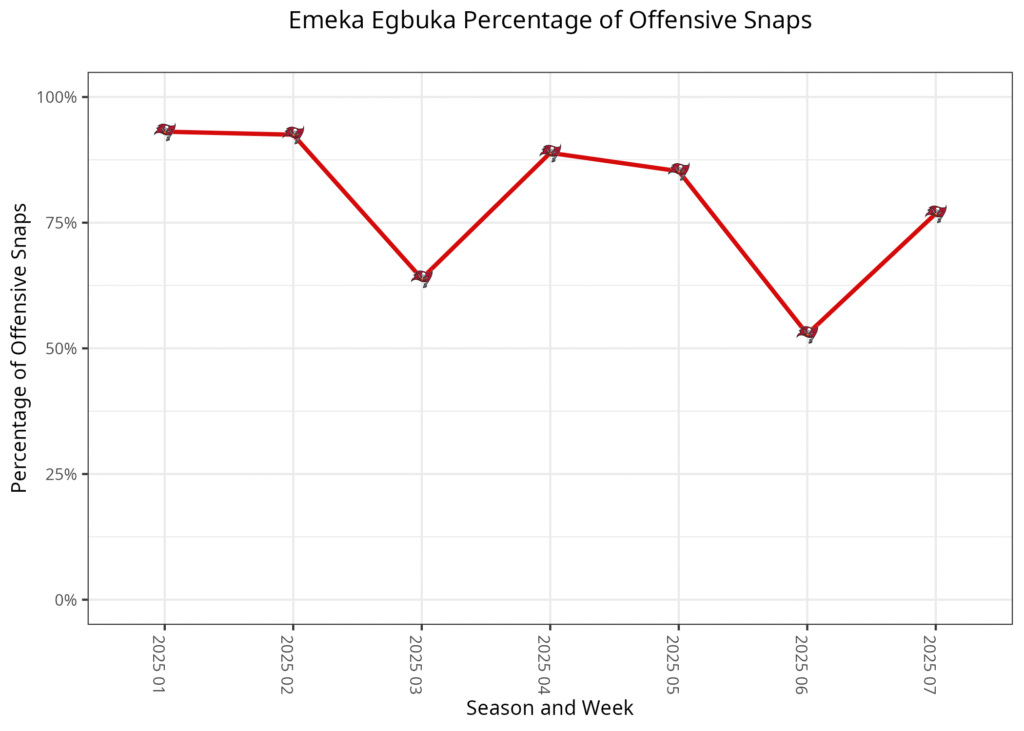
Jahmyr Gibbs shines in an increased role: Gibbs racked up more than 200 yards and notched two touchdowns with an increased workload.
Last season, the Lions typically used David Montgomery a lot in the first and third quarters to help wear down defenses, while Gibbs handled more work in the second and fourth quarters to be their home-run hitter. Gibbs typically played anywhere from 40%-60% of the Lions’ offensive snaps. Montgomery missed some time late in the season, a period during which Gibbs played up to 75% of the offensive snaps.
This season, Gibbs has been starting games, with the Lions showing a willingness to give him multiple drives in a row at times. He was on pace to play more than 65% of snaps for the fourth time this season, but Detroit used Montgomery to close out the victory. Gibbs accomplished that only once last season when Montgomery was healthy. He has gained at least 15 PPR points in six of seven games this season, while Montgomery has hit that mark just twice. This week was the fourth time this season where Montgomery was held to single-digit PPR points. That occurred just once last season, excluding the game where he left early due to injury.
The per-play production between the two running backs is relatively similar, so the Lions may still even out their snap rates and touches in the future, in part to help preserve Gibbs’ health for the playoffs. However, given how well Gibbs played in this hame, Detroit could also give him even more snaps going forward, a workload similar to that of other elite running backs. Regardless, Gibbs remains a must-start fantasy option. Meanwhile, it’s becoming harder to trust Montgomery in fantasy starting lineups.
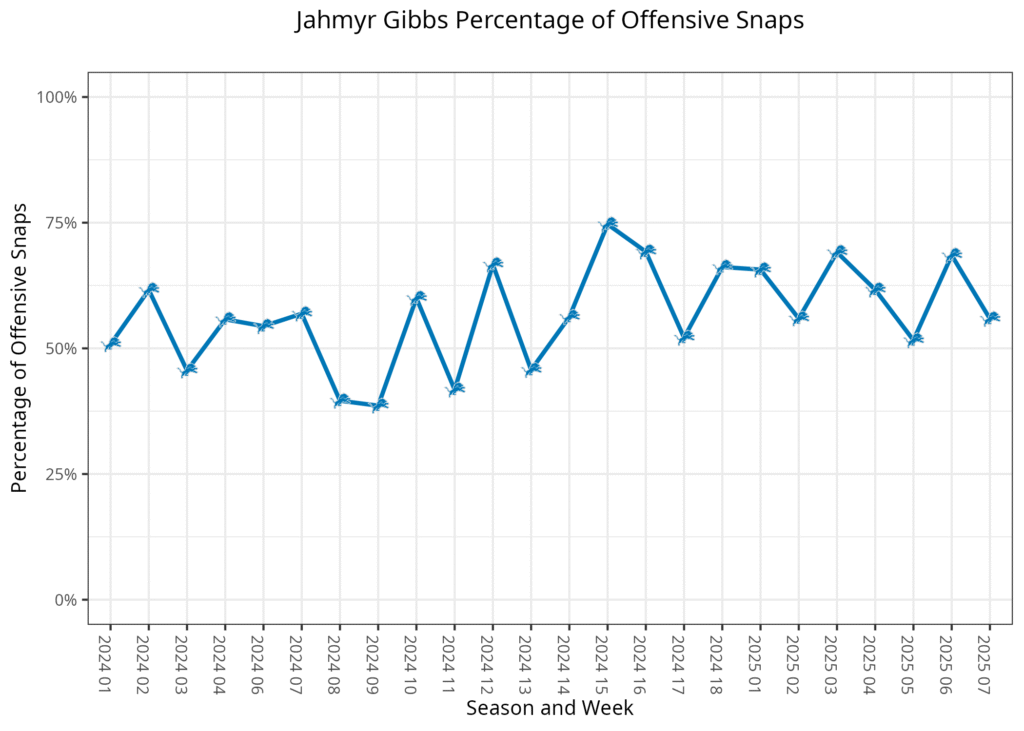
Miscellaneous Notes
- Buccaneers backup quarterback Teddy Bridgewater didn’t practice Saturday with an illness and was questionable, but he suited up.
- Starting halfback Bucky Irving didn’t practice all week and missed his third straight game with foot and shoulder injuries. He was ruled out Saturday. Rachaad White played more this week than the past two weeks, likely because the Buccaneers were playing from behind all game.
- Buccaneers halfback Josh Williams was ruled out due to a concussion, his second straight absence. He didn’t practice Thursday and Friday but was limited Saturday before the team ruled him out. Tampa Bay elevated Owen Wright from the practice squad to be the third option for this game.
- Lions third-string halfback Craig Reynolds suffered a hamstring injury on a special teams play and was ruled questionable to return.
- Lions halfback Sione Vaki didn’t practice all week and missed his fourth straight game with a groin injury. He was ruled out Saturday.
- Kalif Raymond suffered an injury in Week 5, and he was active but barely played in Week 6. That allowed Isaac TeSlaa to be the Lions’ third receiver in those two games. This week, Raymond was back to being the primary third wide receiver, similar to the first four weeks of the season.
Houston Texans @ Seattle Seahawks
Monitor Nico Collins’ health: Collins head hit the turf early in the fourth quarter. He was evaluated for a concussion and then left for the tunnel.
The Texans started the season with Collins, Xavier Hutchinson and Jayden Higgins as their top wide receivers on the outside. Houston immediately fell into a pattern of using Collins in two- and three-receiver sets, Higgins in two-receiver sets and Hutchinson in three-receiver sets. Over the past two weeks, Collins has been rotated out a little more often than earlier in the season, particularly in two-receiver sets, allowing Hutchinson to play more in two-receiver sets. This is concerning, as Collins has been averaging more than 20 fewer receiving yards per game compared to last season.
The team’s slot role has been a little more interesting. Houston started with Justin Watson as its top slot option in three-receiver sets, with third-round rookie Jaylin Noel rotating in. Noel began to rotate in more often in Week 2, but Christian Kirk was healthy for Week 3 and took the vast majority of 11-personnel snaps. Watson ended up on injured reserve, allowing Noel to remain the primary backup. Braxton Berrios has also been on the roster, primarily as a slot receiver, but was inactive for the past five games.
Kirk showed up on Friday’s injury report with a hamstring injury and was limited. He was downgraded to a non-participant Saturday and was ruled out. This seemed to be the perfect opportunity for either Noel to be the lead slot receiver or one of the outside receivers to play more in the slot, allowing Higgins to see more playing time. Instead, Berrios was the primary slot receiver for this game. Noel’s snap rate through the first three quarters was very similar to what it’s been all season. However, in the fourth quarter, when the Texans were constantly running a hurry-up offense, Noel was on the field more frequently than Berrios.
Once Collins suffered his injury, Higgins took his place in three-receiver sets. The Texans were down two scores and then consistently used 11 personnel, but Hutchinson presumably would have also seen more playing time in 12 personnel. Assuming Collins suffered a concussion, he will likely miss next week’s game. Typically, players who suffer a concussion miss one week, and that is even more likely considering the Texans have one fewer day than usual between games.
In Week 8, Houston faces the Denver Broncos, who have allowed the fewest fantasy points to wide receivers this season. You won’t want any of the Texans receivers starting for your fantasy team. However, if you’re in a deeper league and have too many options on bye weeks, you can consider Higgins if he is already on your roster. Hutchinson could also be a waiver-wire target in those leagues.
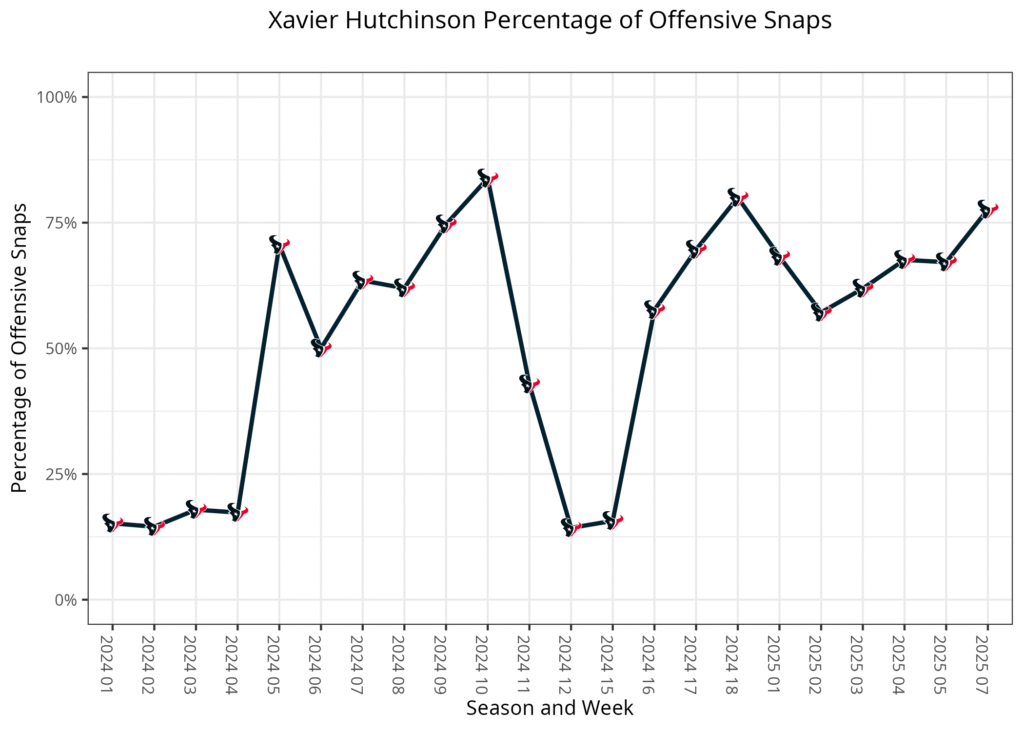
Dare Ogunbowale reemerges in the Texans’ offense: Ogunbowale took the majority of passing-down snaps for the first time since Week 2.
The Texans had a straightforward running back rotation last season, with Joe Mixon playing on early downs and in short-yardage situations, while Ogunbowale played on third downs and in the two-minute drill. Ogunbowale continued in that role for the first two weeks of the season but didn’t take an offensive snap in Week 3. He played just four of a possible 141 snaps in Weeks 4 and 5. This week, he was back to taking the majority of third-down and two-minute drill snaps.
Ogunbowale primarily cut into Nick Chubb’s playing time. Chubb and Woody Marks both received low snap totals last week, in part because of the Texans’ blowout victory, so Dameon Pierce played significantly in garbage time. Marks’ playing time bounced back this week, but Chubb’s didn’t. The Texans started with Chubb like usual and rotated with Marks by drive over the first four drives. Chubb wasn’t finding much success in the run game, so the team ended up turning to Marks for most of the rest of the game. Unfortunately, Marks wasn’t finding success, either.
Marks outsnapped Chubb 15 to 11 in the first half. The Texans were playing from behind throughout the second half, so Marks dominated the offensive snaps. He was on the end of a receiving touchdown, marking his third score in his past three games.
If the Texans continue to use this three-man rotation at running back, it will be very difficult to trust any of the players from a fantasy perspective. The situation will become even more complicated if Mixon returns this season.
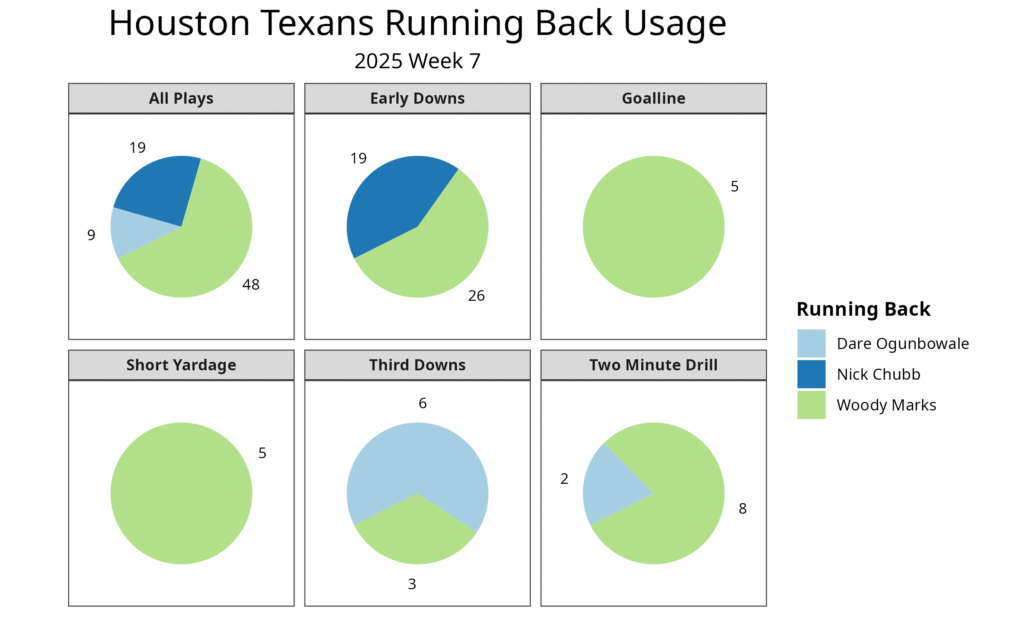
The Seahawks’ frustrating backfield: Kenneth Walker III was the team’s clear early-down back, but Zach Charbonnet was the far better fantasy option in this game.
Charbonnet has played more offensive snaps than Walker this season in games where both players have been healthy. Walker logged 57% of offensive snaps to Charbonnet’s 43% on early downs, but Charbonnet played the majority of third-down and short-yardage snaps — and more than 90% of the two-minute-drill and goal-line snaps. Walker averaged 5.3 yards per carry in those five games, compared to Charbonnet’s 2.6, but the Seahawks’ strong offense has provided Charbonnet with plenty of goal-line work and touchdowns. Walker also hasn’t been involved in the passing game, hurting his value in PPR leagues.
This week, the Seahawks trusted Walker to handle an even higher percentage of the early-down snaps. That led to plenty of carries, but he found minimal success in the run game. Charbonnet didn’t play as much as usual, in part because of the drop in snaps in early downs, as well as the Seahawks’ usage of more 02 personnel than usual on third downs. However, Charbonnet often received the ball when he was on the field for short-yardage and goal-line situations, and he scored two touchdowns.
Walker was the better fantasy option of the two when he was grading out as one of the best runners in the NFL and averaging more than 5.0 yards per carry. However, if Charbonnet is going to play just as well, if not better, in the run game, then he could score more points than Walker over the rest of the season — through fewer carries but more touchdowns.
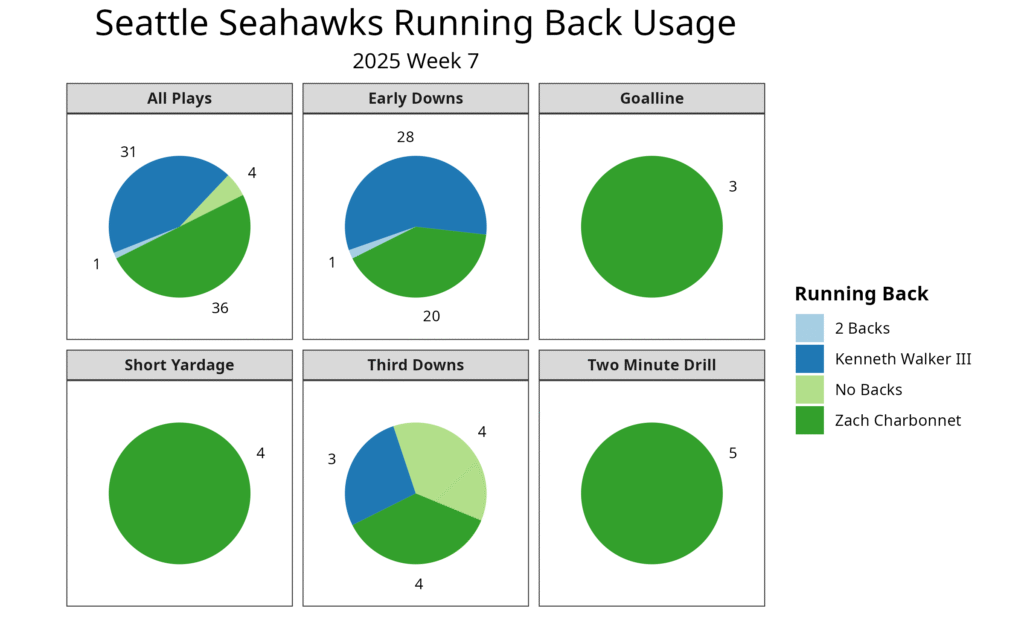
Miscellaneous Notes
- Texans halfback Dameon Pierce was a healthy inactive, as he’s been for most of the season. However, he was active last week.
- Tight end Dalton Schultz tied for the second-most receptions of his career (nine) and notched the second-most receiving yards (98) in a game, too.
- Seahawks rookie quarterback Jalen Milroe was a healthy inactive, his second straight absence.
- The Seahawks have used the same wide receiver rotation all season. Jaxon Smith-Njigba and Cooper Kupp continue to play at least 80% of offensive snaps in both two- and three-wide-receiver sets, while Tory Horton continues to join them for at least 80% of snaps in three-receiver sets.
- While Elijah Arroyo tallied more receiving production, A.J. Barner continues to see significantly more playing time and is the better long-term fantasy option as long as the Seahawks stick with their current rotation.
Table Notes
• Snaps include plays called back due to penalties, including offensive holding or defensive pass interference. The other three stats have these plays removed.
• Targets may differ from official NFL sources. The most likely discrepancy would be from a clear thrown-away pass, where the NFL may give the target to the nearest receiver, while this data will not.
• Carries are on designed plays only. Quarterback scrambles won’t count for the total number of carries in the game.
First Appeared on
Source link






